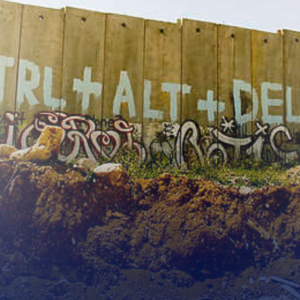Killer Sanctions: The Humanitarian Impact of US Sanctions Policy
Killer Sanctions: The Humanitarian Impact of US Sanctions Policy
A grueling perspective on how the US sanctions policy has led to major economic and humanitarian crises in target nations affecting millions of innocent civilians.

Killer Sanctions: The Humanitarian Impact of US Sanctions Policy
A grueling perspective on how the US sanctions policy has led to major economic and humanitarian crises in target nations affecting millions of innocent civilians.
Writer: Fiza Raza | Copy Editor: Zainabrights | Design: Fatima El-Zein
On February 6, 2023, Turkey and Syria were hit by two cataclysmic 7.8 and 7.7 magnitude earthquakes that resulted in a humanitarian crisis requiring urgent international attention. With millions affected, even the slightest delay in rescue efforts meant a significant rise in death tolls due to critical weather conditions in the region.
Aid deliveries from around the globe ranging from food and medical supplies to high-precision sensors for rescue efforts began pouring into Turkey. Only a few countries, however, were able to send aid to Syria. A striking disparity was evident in the international community’s response to the catastrophe in the two countries. The culprit behind it was the harsh sanctions regime imposed by the US government and its allies on Syria, making it the third most sanctioned nation in the world.
More than 12 hours after the deadly earthquake, no aerial activities over Syria. pic.twitter.com/snIxgyJyA6
— Within Syria (@WithinSyriaBlog) February 6, 2023
The first wave of US sanctions against Syria came in 1979, when it was designated a ‘state sponsor of terrorism’ due to the Syrian government’s support for Iran and Hezbollah. The result was a major economic disaster called the “crisis of the eighties.” After the Syrian civil war began in 2011, the US targeted Syria with a new wave of sanctions, which put the Syrian oil sector under a complete embargo and froze the country’s assets. Exports of goods and technology to the war-torn nation were also banned.
The US government went for the jugular in 2019 when former President Donald Trump signed the Caesar Syria Civilian Protection Act into law. It targeted every individual or entity economically involved with Syrian authorities. While the goal of this law was to protect Syrians, the only segment of the population it failed to protect were the civilians themselves.
The implementation of the Caesar Act in 2020 plunged Syria, already struggling from years of foreign-backed civil war, deeper into a severe humanitarian and economic crisis. The value of the Syrian pound dropped dramatically, and recent reports show that 90 percent of the Syrian population is living below the poverty line. Most Syrians lack access to basic amenities, with 70 percent of the population needing humanitarian assistance to survive.
Following a visit to Syria in November 2022, UN human rights expert Alena Douhan urged the US government to lift its unilateral sanctions from the country because they “severely harm human rights” and “prevent any efforts for early recovery, rebuilding and reconstruction.”
Caesar Act sanctions are crippling Syria's beleaguered health sector
— Mahdi Rizvi (@MehdiRizvi123) July 30, 2020
"Before the war, Syrian healthcare was the envy of the region." Now suffocating US sanctions are killing civilians and destroying the health system pic.twitter.com/eEIj1k3blQ
The Syrian healthcare infrastructure has also been significantly damaged by sanctions, as international pharmaceutical companies cannot have any financial transactions with Syrian authorities. The result has been a major shortage in medicines and specialized medical equipment, which has negatively affected cancer treatment for children and patients with rare conditions.
The humanitarian situation in Syria following the February earthquakes, coupled with the aftermath of the Syrian civil war, demonstrates the destructive consequences US economic sanctions have on innocent civilians in target nations. The use of sanctions as coercive measures used by Western countries has witnessed an accelerating trend over the past several decades.
According to the Global Sanctions Data Base (GSDB), the US has imposed the greatest number of unilateral sanctions against other nations, individuals, and entities. Over 20 countries are currently in the US Department of the Treasury’s Office of Foreign Assets Control (OFAC) sanctions list. To cover the resulting humanitarian crises in these countries is beyond the breadth of this report.
Whereas sanctions sound more politically expedient and legitimate than military action, their destructive consequences are not less than a full-scale military offensive. Sanctions include a wide array of punitive measures such as complete or partial import and export bans, asset freezes, financial restrictions, and travel bans. Besides having detrimental consequences on the target country’s economy, other sectors of society, including science, medicine, and technology are also affected. This leads to widespread economic and humanitarian turmoil.
Besides Syria, several other countries have also been gravely affected by US sanctions. Afghanistan is another modern-day example of how the US government’s financial sanctions against the Taliban in 2001, combined with President Biden’s executive order prohibiting the Central Bank of Afghanistan from accessing its $7 billion assets in the US Federal Reserve, are resulting in the aggravation of an already-critical situation.
A volatile political and economic situation combined with natural disasters has left 90 percent of Afghans on the verge of poverty, with children suffering the most.
Afghans spend about 75 percent of their income on food, and unemployment has risen by 40 percent since late 2020.
The UN has described the present situation in Afghanistan as an ‘epic humanitarian crisis on the verge of a development catastrophe,’ and has called on the US to unblock the Central Bank of Afghanistan’s assets. The scale of the crisis is so large that the number of deaths attributed to sanctions could be higher than the US-led war against terrorism in Afghanistan.
In Venezuela, US unilateral coercive measures were responsible for an estimated 40,000 deaths between 2017 and 2018, and thousands of lives are currently at risk due to malnutrition and lack of necessary medical care. US sanctions against Venezuela target the country’s oil industry and block it from accessing the US financial system.

Venezuela lost an estimated $6 billion in oil revenues following the 2017 sanctions, and the result was a severe economic crisis. Sanctions prevent Venezuela from conducting foreign financial transactions, and its impact can be seen on the country’s food imports, which decreased from $11.2 billion in 2013 to only $2.46 billion in 2018.
In 2019, the Trump administration imposed more sanctions on Venezuela’s oil and natural gas company PDVSA, causing a further decrease in the country’s oil production. The result was a fuel shortage that led to Venezuela’s 2019 electricity crisis. The GDP also dropped significantly by 35 percent that year.
For around four decades, Iran stood as the world’s most sanctioned nation before being surpassed by Russia in 2022, following the Ukraine war. The Iranian economy has been the target of one of the most crippling sanctions regimes since its 1979 revolution. During the past decade, the country has experienced two major rounds of severe sanctions during the Obama and Trump administrations.
In 2012, President Obama signed Executive Order 13599, which sanctioned the Central Bank of Iran and other financial institutions involved in Iran’s oil trade. That year, Iran’s GDP growth decreased by more than five percent, and its currency was devalued by 48 percent. The country’s economy did not see significant growth until some sanctions were relieved following the 2015 JCPOA nuclear deal, which was signed following 20 long months of negotiations.
Demonstrators opposite Tehran research reactor: No to sanctions, Yes to 190k centrifuges pic.twitter.com/9Qtlaqyvay
— Yossi Mansharof (@Yossi_Mansharof) November 23, 2014
After President Trump withdrew from the nuclear deal in 2018, all previous sanctions were re-imposed along with additional ones. The result was severe currency devaluation and soaring inflation rates. While every dollar cost around 40,000 Iranian rials before Trump’s withdrawal from the deal, the dollar-rial exchange rate had risen dramatically to 300,000 rials per dollar in September.
Without any sanctions relief, the economic crisis in Iran continues to hurt average citizens, as each dollar currently costs around 500,000 rials in the open market, and food prices have increased by 70 percent compared to last year.
The impact of sanctions has not been limited to the Iranian economy, but has also infiltrated other unforeseeable aspects of Iranian people’s lives. Earlier this year, the UN warned about “increased complications and mortality rates” among Iranian thalassemia patients as foreign pharmaceutical companies avoid transactions with Iran over fear of penalties with US sanctions in place. This has prevented the delivery of iron-regulating medicines to patients, with recent reports warning that Iranian patients are dying due to the US ‘maximum pressure’ foreign policy.
US SANCTIONS ON IRAN HAVE CREATED AN AIR QUALITY CRISIS
— MintPress News (@MintPressNews) January 4, 2023
Students have been sent home from school, outdoor activities have been limited, and the government is enforcing a traffic rationing program. pic.twitter.com/lpK2o4G40M
Sanctions are also hampering the Iranian government’s efforts to combat air pollution in bigger cities. During the past year, Tehran only witnessed three days of clean air. In 2022, UN experts stated that “it is no surprise that Tehran is one of the world’s most polluted cities,” describing the role US sanctions have in preventing Iranians from accessing fuel-efficient vehicles that reduce emissions. Sanctions also block foreign investments, preventing energy firms from building solar power plants in Iran.
The global devastation caused by international sanctions is tremendous, and yet it receives little to no media attention. UN experts have repeatedly warned the US about the humanitarian impacts of its unilateral sanctions, stating recently that “all human rights are affected when sanctions are imposed.”
It would not be an exaggeration to consider sanctions as weapons of mass destruction, the only difference being the slow and painful deterioration of countries and their people over time. Millions of lives have been affected by US sanctions globally as a form of collective punishment that imposes suffering on innocent civilians for crimes they never committed.
Writer: Fiza Raza | Copy Editor: Zainabrights | Design: Fatima El-Zein
If you value our journalism…
TMJ News is committed to remaining an independent, reader-funded news platform. A small donation from our valuable readers like you keeps us running so that we can keep our reporting open to all! We’ve launched a fundraising campaign to raise the $10,000 we need to meet our publishing costs this year, and it’d mean the world to us if you’d make a monthly or one-time donation to help. If you value what we publish and agree that our world needs alternative voices like ours in the media, please give what you can today.




